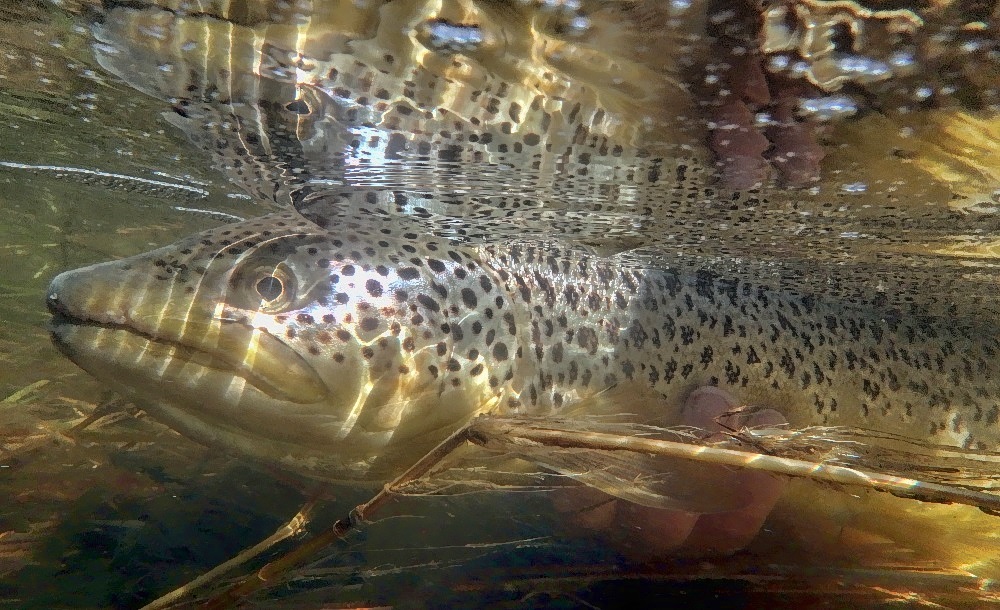I would agree with all Pauls points except his question

I would add, always use wet hands when holding the fish, dry hands remove the fishes protective coating effectively Burning the fish

As for the question, most 3 and 4 wts will bend more than heavier rods and absorb more of the fishes power, gently, The bending allows the lunges, large fish make, helping to prevent the jaws being ripped.
Stiffer rods break off more leaders and i think many people using them, fanny about when playing fish because they are afraid the leader will break, this is what cause the fish to stress IMHO. A nice mid action rod avoids this regardless of line weight.

I would be inclined to suggest it is the rods action that allows you play a fish quicker and safer rather than line weight. Line weight is more to do with fly size than anything else. By default most 3/4 wts have a mid action and are softer, so in many cases they are probably better and quicker when it comes to landing fish

Sandy
Hamish i know what you mean


